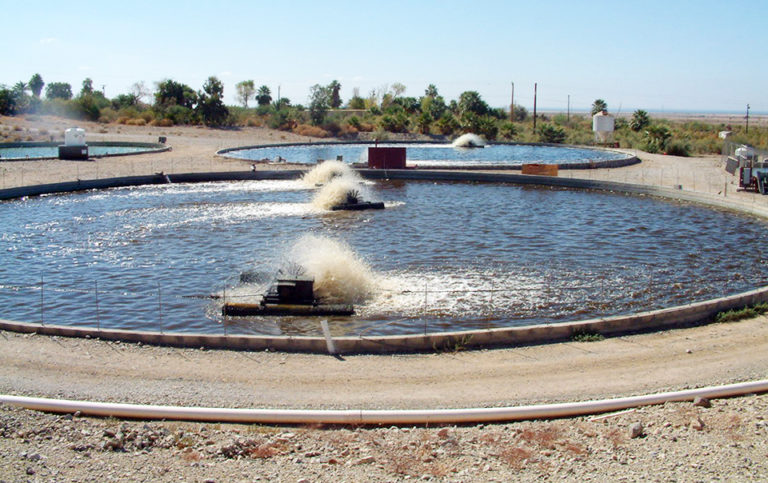
Health & Welfare
Tilapia production using biofloc technology
Biofloc systems enable more intensive tilapia production. The fish adapt to the conditions within biofloc systems and grow well by utilizing the bioflocs as a feed source.
Health & Welfare
In an experiment comparing two biofloc concentrations, shrimp grew larger and faster in low-solids, with no significant differences in survival, FCR or final biomass.

Health & Welfare
Biofloc systems enable more intensive tilapia production. The fish adapt to the conditions within biofloc systems and grow well by utilizing the bioflocs as a feed source.
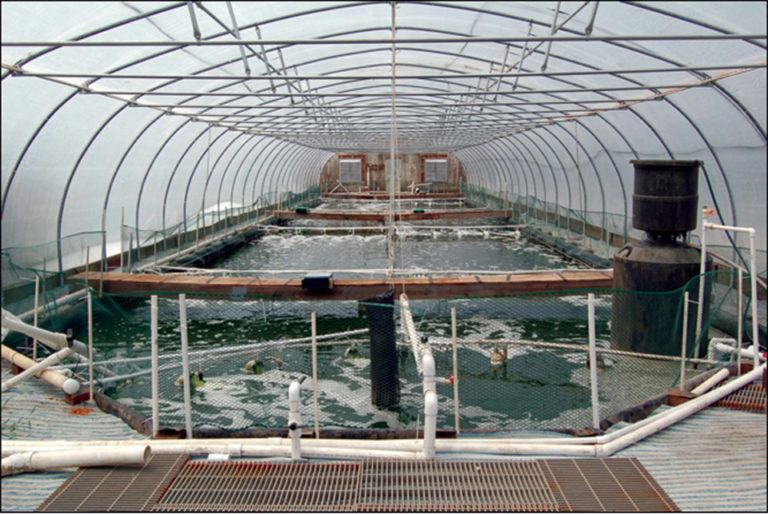
Health & Welfare
Waddell Mariculture Center operates a commercial-scale prototype raceway utilizing minimal water exchange and biofloc culture to develop protocols for the indoor growout of Pacific white shrimp.
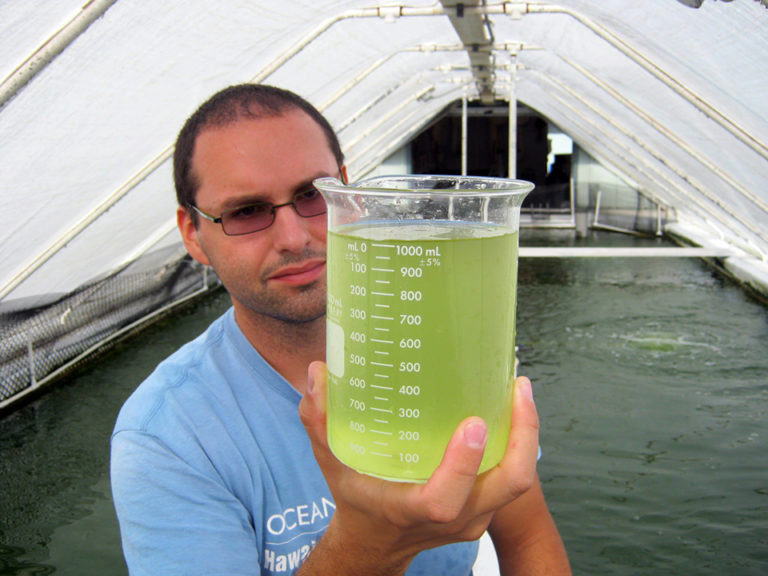
Health & Welfare
In biofloc production systems, ammonia-oxidizing bacteria process ammonia to nitrite, which provides substrate for nitrite-oxidizing bacteria that process nitrite to relatively non-toxic nitrate.
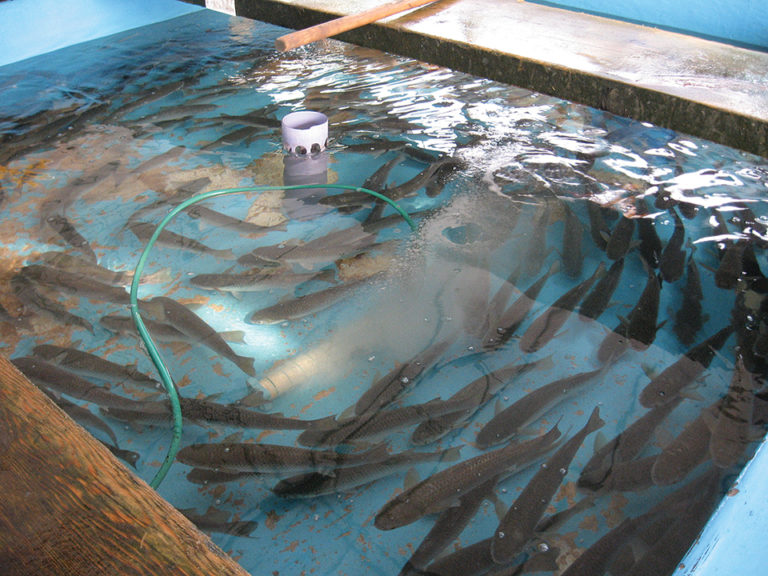
Responsibility
Aerator designs and mixing are key components of biofloc production systems. Diffuser aerators work primarily in smaller systems by moving deeper waters to the surface and creating constant mixing.

Aquafeeds
Recent research is demonstrating that biofloc-based proteins are suitable replacements for fishmeal in aquaculture diets. Since bioflocs can be produced while treating aquaculture effluents, a waste product can be converted into a valuable resource.
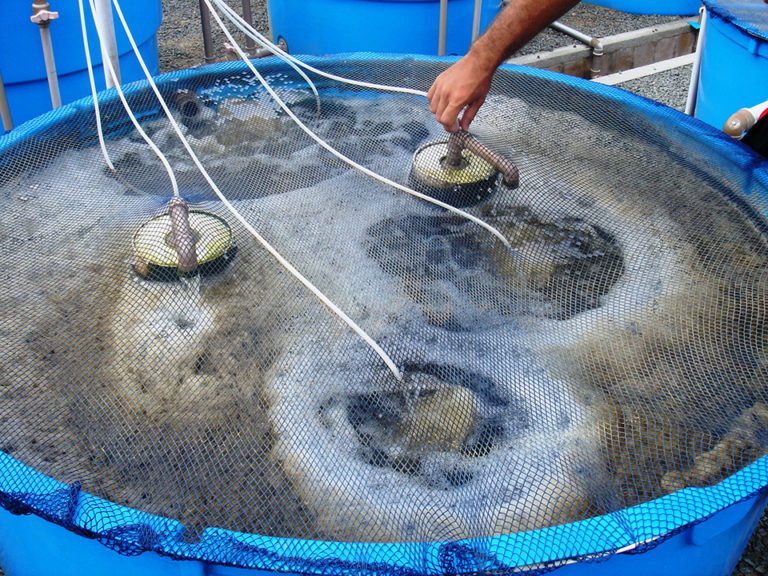
Aquafeeds
The authors conducted a study to determine how reducing the protein content of a diet would affect the growth performance of L. vannamei reared in an experimental microbial floc culture system.
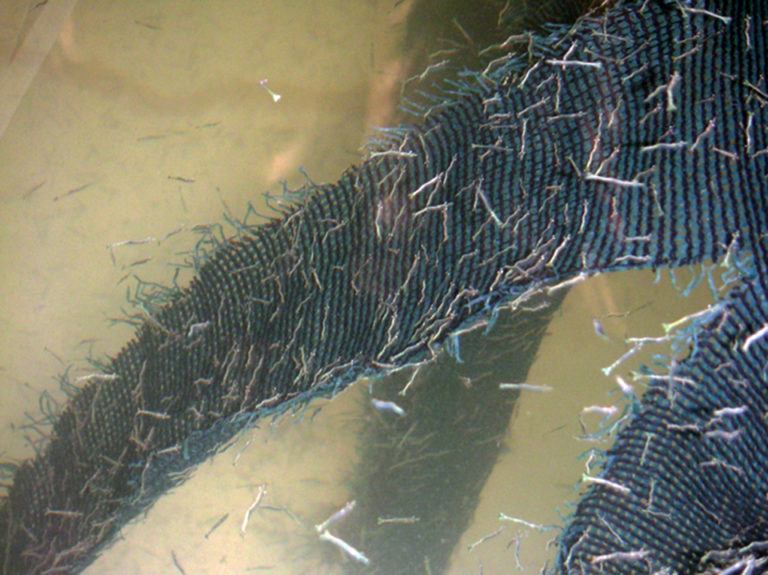
Responsibility
Trials with recirculating shrimp nursery systems in India supported the use of biofloc. To control ammonia is a way to reduce filtration costs.
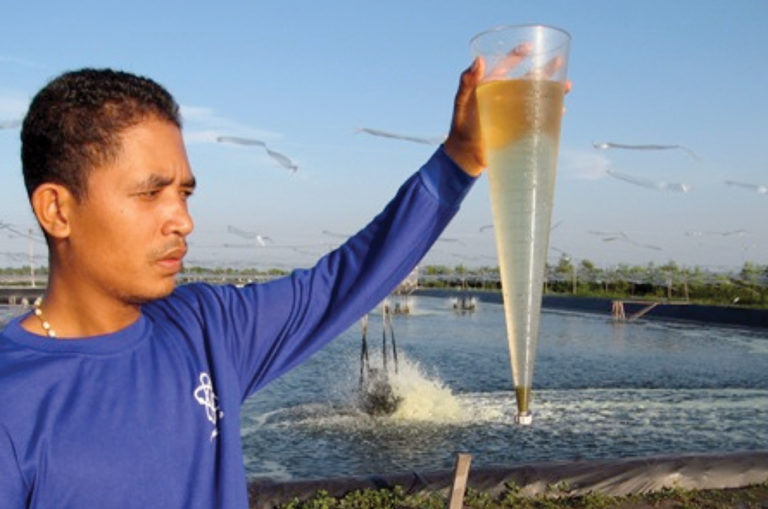
Health & Welfare
In a study in Indonesia, increases in efficiency in power use resulted from the combined application of biofloc technology and partial harvest.